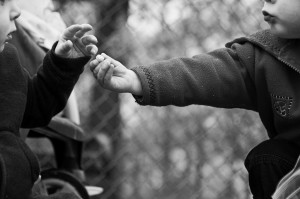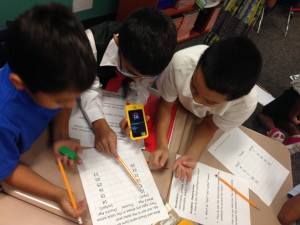New Things, New Ways
In his article Shaping Tech for the Classroom, Marc Prensky outlines what is considered to be the typical process of technology adoption.
1. Dabbling – doing what we’ve always done, pretty much how we’ve always done it
Example: I recall a conversation I had with my Grandma, shortly after my Uncle set up her e-mail account. She was fascinated with the new ‘electrical mail’, and explained how she had already written several letters to us. Thinking I had missed something, I checked my e-mail account again…nothing.
“Gram, I don’t think we received them.”
“Oh, I haven’t sent them, yet. I just typed them and need to figure out how to get them out so I can put them in envelopes.”
2. Doing old things in old ways – communicating and/or exchanging information digitally
Example: Seven other teachers and I taught at the same grade level, in the same building, but on different schedules. To support our communicative efforts, we constantly shared ideas, lesson plans and other resources using email, googledocs & wiki pages.
3. Doing old things in new ways – video & animated demonstrations; writing on blogs, wikis, etc.
Example: One of my 3rd grade students taught himself how to use Scratch, then used the software to create an animated video about a particular aspect of energy conservation
Example: Students use Inspiration or another graphic organizer to create story webs of selected anthologies
4. Doing new things in new ways – creative & innovative, ‘next-step’ teaching
Example: Students chose to create blogs to develop and strengthen their understanding of a particular topic. They used the blogs to host links to articles, videos, images and podcasts that supported their learning. One way the new,new component surfaced was through student investigations of professionals in various fields. Students identified professionals, invited them to ‘speak’ on their blog, respond to their posts and become members of their learning network. By “reaching out and pulling in”, exchanging ideas, questions & resources with so many experts beyond the walls of their classrooms, students were doing new things in new ways.
Example: Teachers use digital tools to reach outside our immediate circle of experience and knowledge, and to engage in significant discourse about a wide variety of professional topics.
Our goal by the end of the year is to have a range of things that fit into stages 3 and 4
Working with your partner, please consider and respond to each question below. As always, you are welcome and encouraged to use any tools at your disposal to share your thinking (audio or text responses, links to student work, or other examples).
1. What have you done or planned that you think would fit into category 3?
2. What have you done or planned that you think would fit into category 4?
3. Are there any activities or projects that might qualify as a 3.5?


